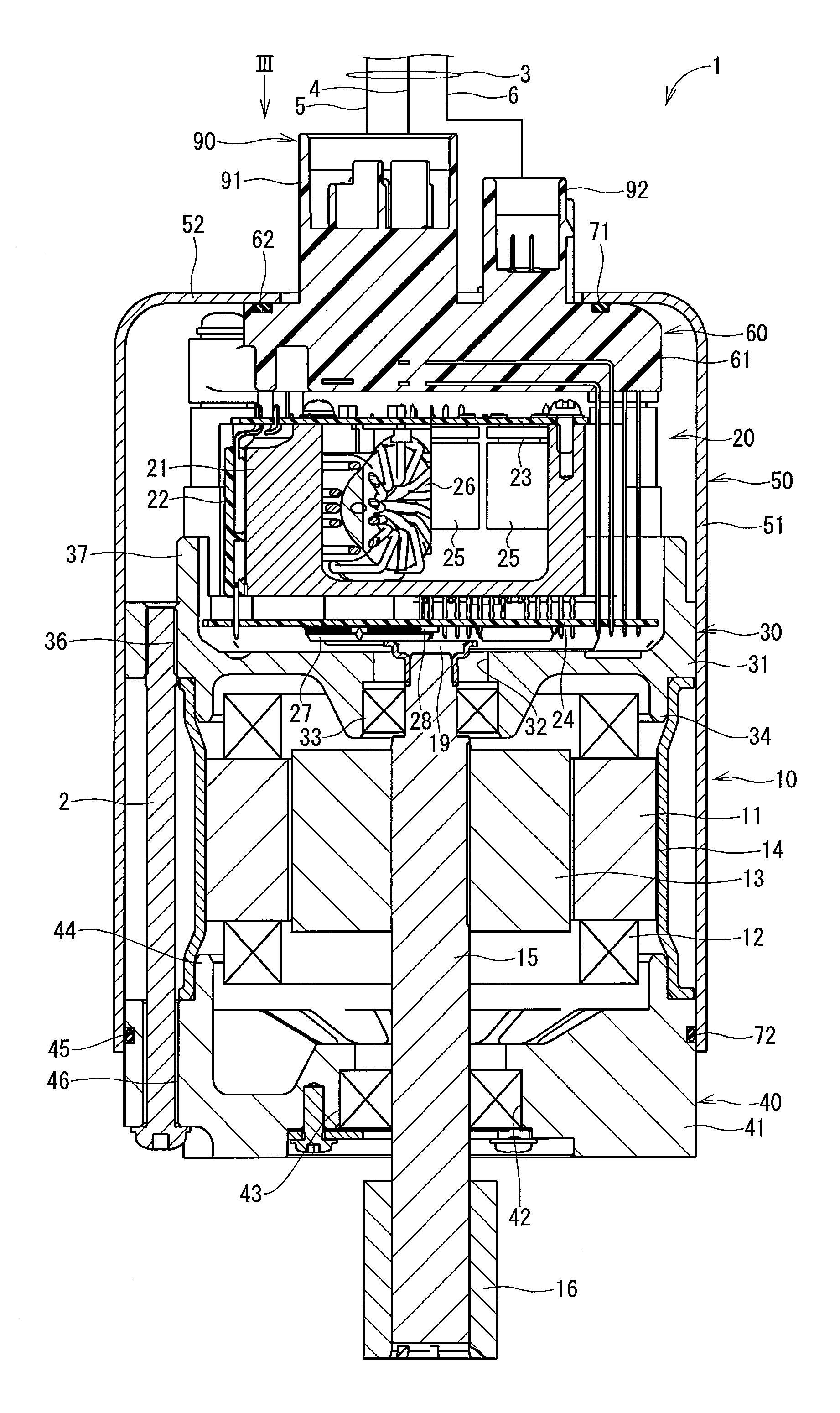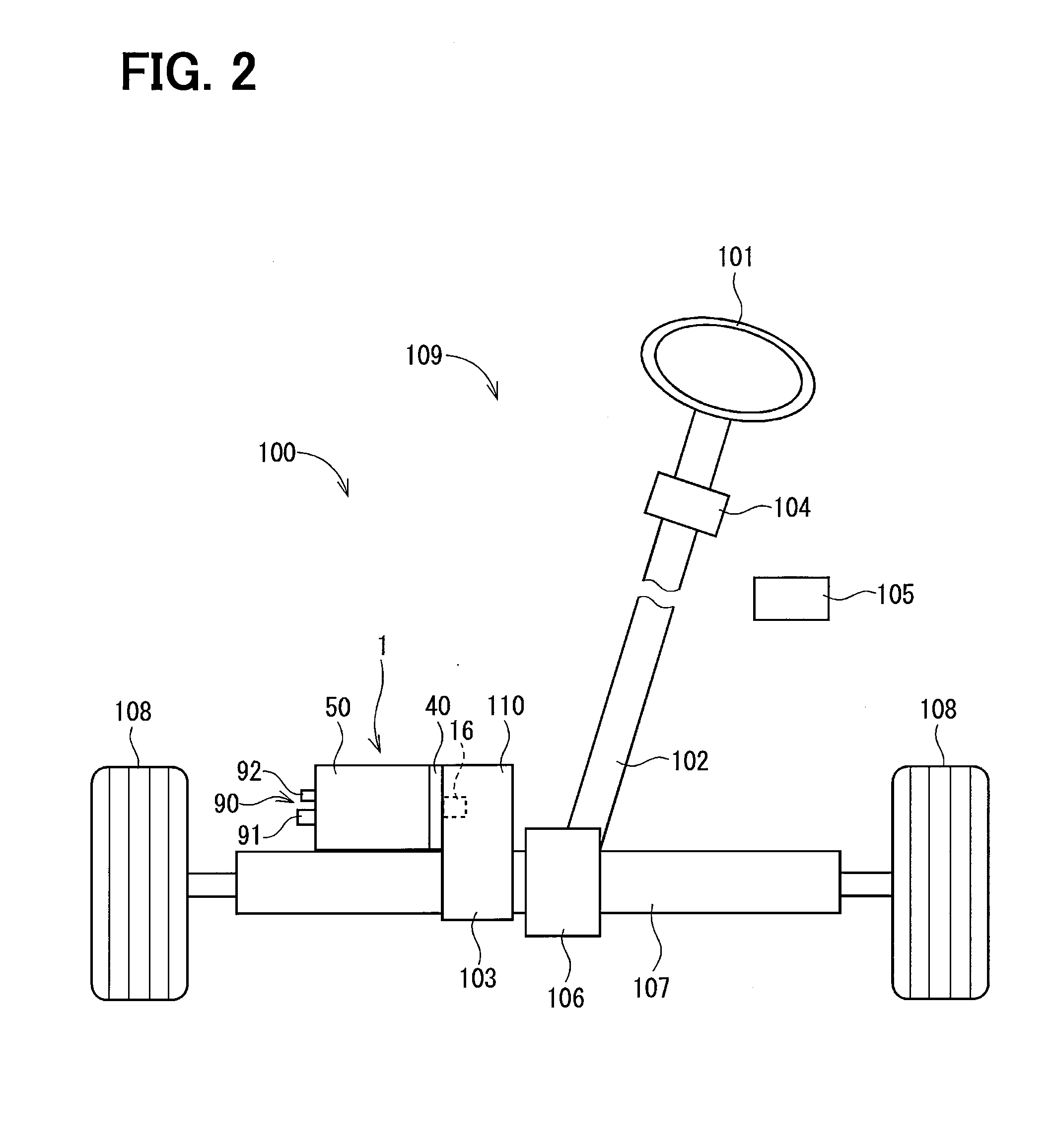Rotating electric machine
a technology of rotating electric machines and motors, which is applied in the direction of dynamo-electric machines, structural associations, supports/enclosed/casings, etc., can solve the problems of increased manufacturing costs controller sections and/or motor sections, and insufficient dust-proof and water-proof performance of motor sections, etc., to achieve simplified structure of rotating electric machines, reduced number of parts, and simple configuration
- Summary
- Abstract
- Description
- Claims
- Application Information
AI Technical Summary
Benefits of technology
Problems solved by technology
Method used
Image
Examples
first embodiment
[0027]The rotating electric machine in the first embodiment of the present disclosure is shown in FIG. 1. The rotating electric machine 1 is driven by receiving an electric power supply, for example, and is used as an electric power steering device for assisting a steering operation of a vehicle.
[0028]FIG. 2 shows an entire configuration of a steering system 100 having an electric power steering device 109. In the electric power steering device 109, a torque sensor 104 is disposed on a steering shaft 102 that is connected to a steering wheel 101. The torque sensor 104 detects a steering torque that is inputted to the steering shaft 102 via the steering wheel 101 from a driver.
[0029]A pinion gear 106 is disposed at a tip of the steering shaft 102, and the pinion gear 106 engages a rack shaft 107. On both ends of the rack shaft 107, a pair of tires 108 is steered via a tie rod.
[0030]In such configuration, when the driver rotates the steering wheel 101, the steering shaft 102 connected...
second embodiment
[0085]The rotating electric machine in the second embodiment of the present disclosure is shown in FIGS. 6-9.
[0086]In the second embodiment, a structure of the second frame and other part are different from the first embodiment.
[0087]As shown in FIG. 6, in the second embodiment, the frame body 41 of the second frame 40 has a concave part 47, instead of having the through hole 46 in the first embodiment. The concave part 47 is formed on one side of the frame body 41 which is close to the motor section 10 (i.e., on a motor section side surface of the second frame 40). Further, the bolt 2 is inserted into the through hole 36 of the first frame 30 and an end of the bolt is fastened in a screw-fastened state into the concave part 47 so that the first frame 30 and the second frame 40 are fastened. Here, one end (i.e., a head) of the bolt 2 is stopped on one side, i.e., the cylinder part 37 side, of the frame body 31, and the other end of the bolt 2 (i.e., an opposite end relative to the h...
PUM
 Login to View More
Login to View More Abstract
Description
Claims
Application Information
 Login to View More
Login to View More - R&D
- Intellectual Property
- Life Sciences
- Materials
- Tech Scout
- Unparalleled Data Quality
- Higher Quality Content
- 60% Fewer Hallucinations
Browse by: Latest US Patents, China's latest patents, Technical Efficacy Thesaurus, Application Domain, Technology Topic, Popular Technical Reports.
© 2025 PatSnap. All rights reserved.Legal|Privacy policy|Modern Slavery Act Transparency Statement|Sitemap|About US| Contact US: help@patsnap.com



